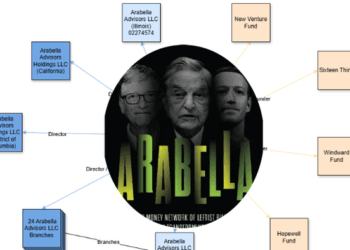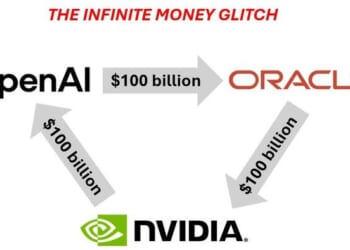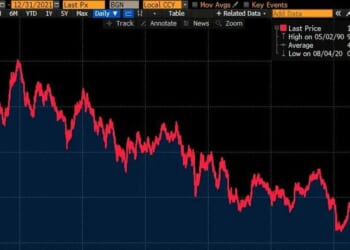
Worldwide data center investment is expected to exceed $580 billion in 2025—more than the annual global investment in oil exploration and production. And because data center construction is concentrated in areas with cheap land and good fiber-optic connections, they’re radically increasing the energy needs of many communities. Until recently, the Omaha Public Power District in Nebraska assumed that new power demand would grow by roughly four megawatts a year: enough to power a few thousand homes. That number is now above 100 megawatts.
But how to meet that demand has split along party lines. Under former president Joe Biden, the U.S.—at least in theory—embraced an “all of the above” approach that promoted renewable energy, fossil fuels, and nuclear energy, but critics contended the White House focused on renewables above everything else.
In President Donald Trump’s second term, the U.S. has veered away from the Biden approach, terminating or limiting subsidies for many green energy projects and reinvesting in coal-fired power plants. But nuclear power has remained one of the government’s favored industries (along with geothermal power).
And given the costs of starting up nuclear projects, government support may be needed to get a renewed nuclear power construction industry off the ground. The only two new large U.S. nuclear reactors built in the last several decades, Vogtle 3 and Vogtle 4 in Waynesboro, Georgia, together cost more than $30 billion, more than twice the original $14 billion projected cost.
“Ultimately, to scale these technologies, it’s going to require a mix of private financing and targeted public financing,” Niko McMurray, the managing director for international and nuclear policy at ClearPath, a clean-energy advocacy group, told TMD.
That’s partly because, in the U.S., building reactors is so rare. Almost all commercial nuclear energy generation in the U.S., powered by 94 reactors, came online between 1970 and 1990, so pipelines of skilled workers, supplies of specialized equipment, and basic project-management skills have long since dried up.
But the experience of Vogtle’s construction might point the way forward, Judi Greenwald, the president of the Nuclear Innovation Alliance, told TMD. Even though the project had massive cost overruns, including the lead company, Westinghouse, going bankrupt, Vogtle 4 was built faster than Vogtle 3, Greenwald said. “That gave a lot of credence to people who said ‘we can get our groove back in this,’” she said. “We just have to build more.”
The U.S. also has non-economic incentives to invest more in nuclear energy. Currently, China and Russia are trying to become the leading providers of new nuclear energy. Of the 70 grid-connected nuclear reactors under construction and 110 under planning and proposal, the vast majority are being built by Russia or China, mainly in Asia. The U.S. wants to change that, as part of the White House’s “Energy Dominance Agenda.”
As global energy supply chains become increasingly vulnerable to geopolitical tensions, the U.S. can both secure its own nuclear energy supply and market it to other countries, Jennifer Gordon, the director of the Nuclear Energy Policy Initiative at the Atlantic Council, told TMD. Russian reactors, she said, are based on a build-own-operate model, where the end product is “like a little piece of Russia sitting in your country.” The reactor’s “ownership is Russian, the security force could be Russian protecting the plants, and Russia may then have the ability to turn off the power,” Gordon said.
In contrast, U.S. production processes are much more transparent, and countries can assume control of the reactors after they’ve been built. In recent months, several countries have signed nuclear power agreements with the U.S.—most recently Saudi Arabia, which this week agreed to a future U.S.-Saudi nuclear power partnership. And in August, Hungary committed to buying 10 U.S.-designed small modular reactors (SMRs).
Traditional nuclear power plants produce on average 1,000 megawatts of power, and can make up to 2,000—suitable for powering large-scale projects like municipal electrical generation—and are built one at a time, on-site. SMRs generate 300 megawatts or less, and can be built in factories and then deployed for smaller projects, such as industrial plants and water desalination facilities. Though China and Russia are building more large nuclear plants, SMRs and even smaller micro-reactors are one area where the U.S.—and its startup scene—may possess a qualitative advantage.
Valar Atomics, the Palantir-backed firm based in California, announced Monday that it had become the first nuclear startup to achieve criticality, or a continuous chain reaction that powers its reactor. Other firms are using SMRs, along with new tech—like using molten chloride salts as fuel, which is much safer than uranium—to create new commercial uses.
TMD spoke to Joel Spangenberg, the U.S. country head for Core Power, a British startup that aims to create floating nuclear power plants and nuclear-powered motors for merchant vessels. Core Power’s business plan hinges on assembling large numbers of SMRs at a single site and then fitting them onto ships or towing them to offshore basing sites, rather than building bespoke plants at individual sites. “We’ll be able to get the learning curve effect and drive down the cost,” he said.
But America’s road toward renewing its nuclear industry is far from assured, said Rowen Price, a policy adviser on the nuclear energy team at Third Way, a left-of-center think tank. Significant financing commitments from the government, permitting reform, and redeveloped equipment pipelines—all are needed to regrow the U.S. nuclear industry
But she noted the political and commercial prospects have rarely been brighter. “A lot of it is kind of new for us, because we haven’t done a lot of this in a while, and so we’re kind of learning from the beginning,” she said.

















